Halo of hope: Radical surgery for a disfigured Alaskan boy
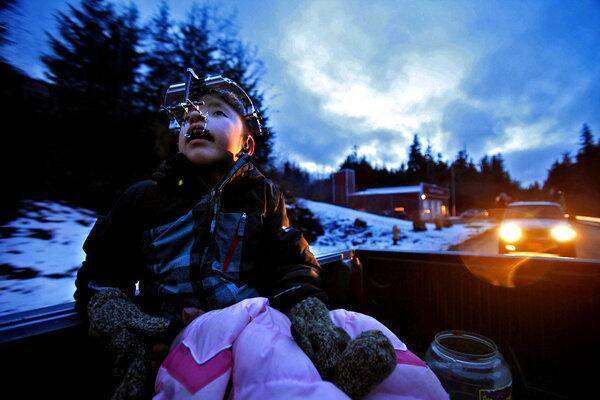
James Weatherwax, 11, rides in the back of his grandfather’s truck while participating in a celebratory parade through the town of Klawock, Alaska, honoring the Klawock High School basketball team, which won the state championship in March. He was born with Apert syndrome, a rare genetic mutation that fuses the skull prematurely, distorts the bones of the face and melds the muscles and bones of the fingers and toes. In late January 2013, an innovative metal brace, or halo, was attached to his head to help realign his face. He has undergone more than a dozen operations at Children’s Hospital in Seattle to correct the appearance of his face and hands. (Genaro Molina / Los Angeles Times)
An Alaska Native boy undergoes radical new surgery for Apert syndrome.
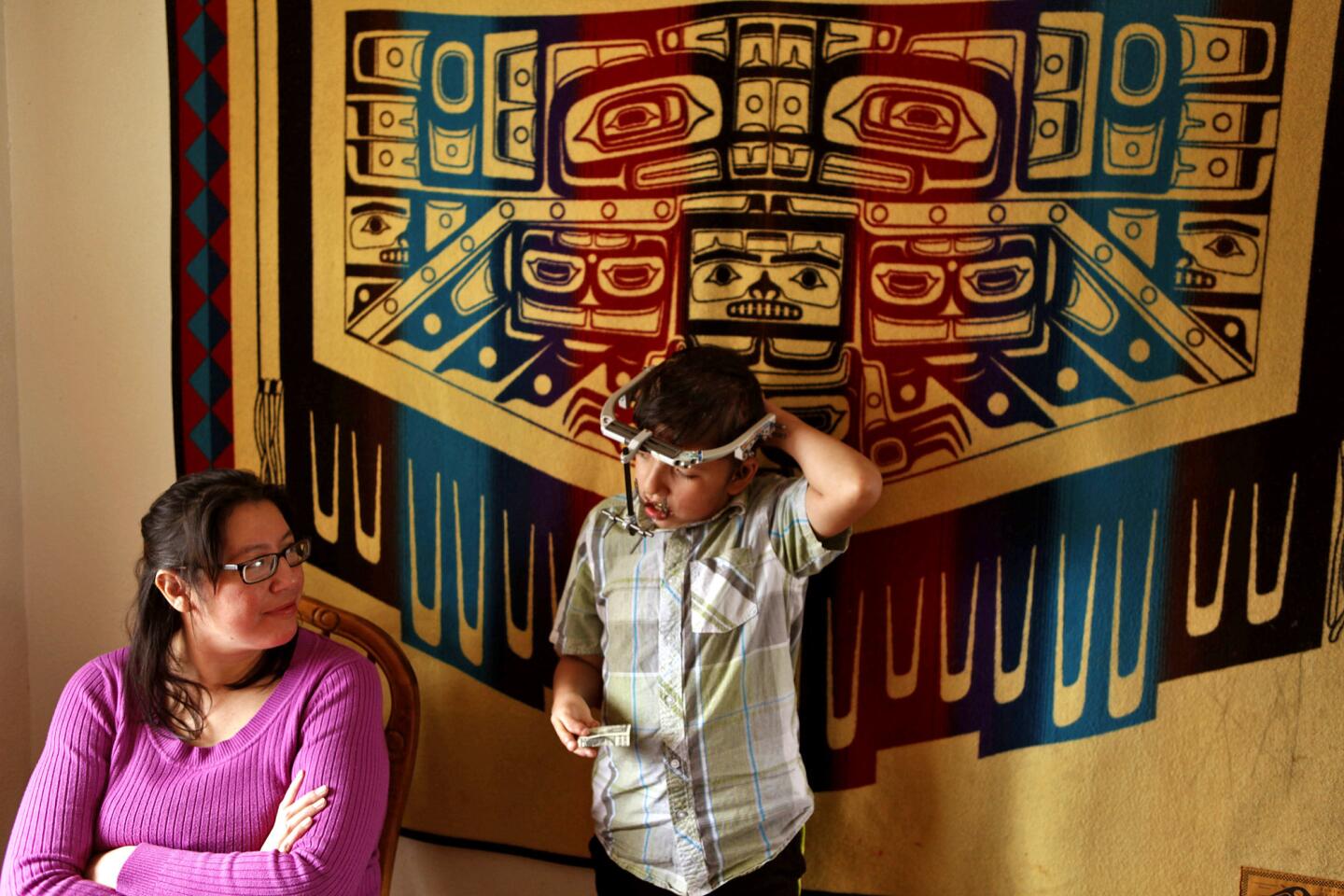
James Weatherwax, 11, spends a quiet moment with mother Kecia Weatherwax in the home they share with her father in Klawock, Alaska. James was born with Apert syndrome, a rare genetic mutation that fuses the skull prematurely, distorts the bones of the face and melds the muscles and bones of the fingers and toes. He wears a metal brace to help realign his face. (Genaro Molina / Los Angeles Times)
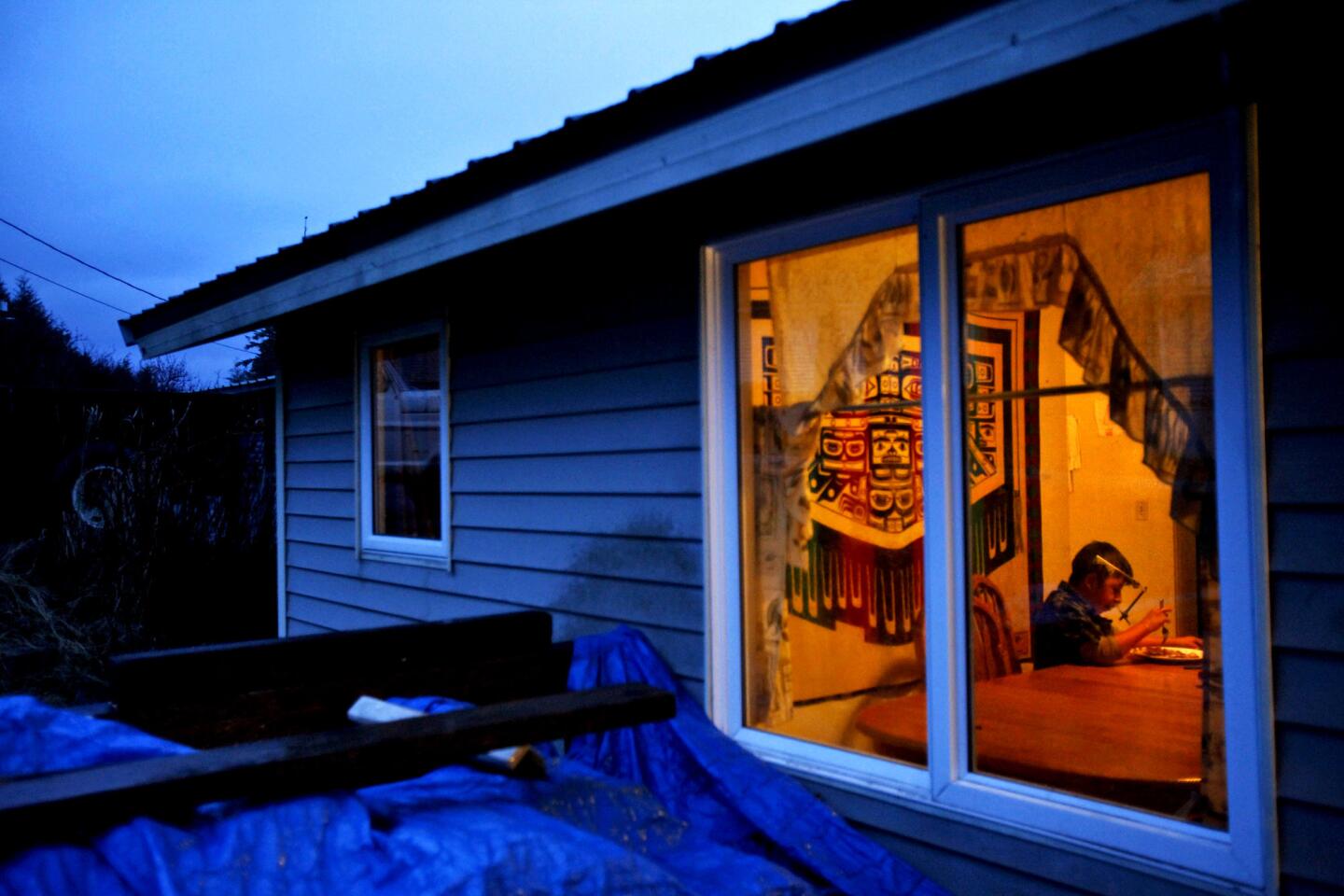
James Weatherwax, 11, has breakfast at the crack of dawn before making an 18-hour journey from his home in Klawock, Alaska, to Seattle to have his halo device removed at Children’s Hospital. James is only the fifth patient to have undergone the landmark surgical procedure to attach the metal brace to his head to help realign his face. The innovative technique was developed by Dr. Richard Hopper, head of the hospital’s craniofacial center. (Genaro Molina / Los Angeles Times)
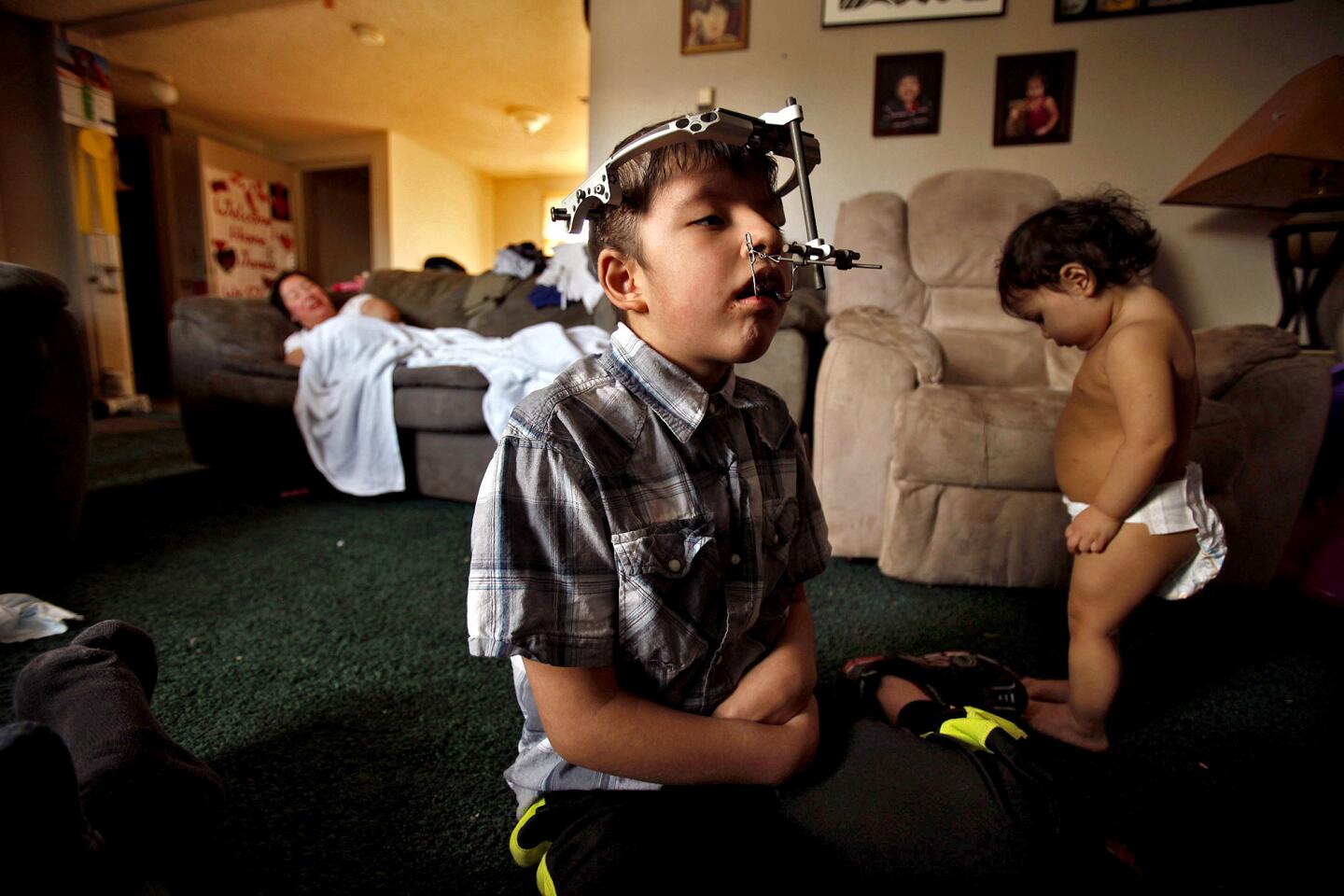
James Weatherwax, 11, watches television next to his sister Abby Lane, while their mother, Kecia Weatherwax, rests on a couch in the living room of their home in Klawock, Alaska. (Genaro Molina / Los Angeles Times)
Advertisement
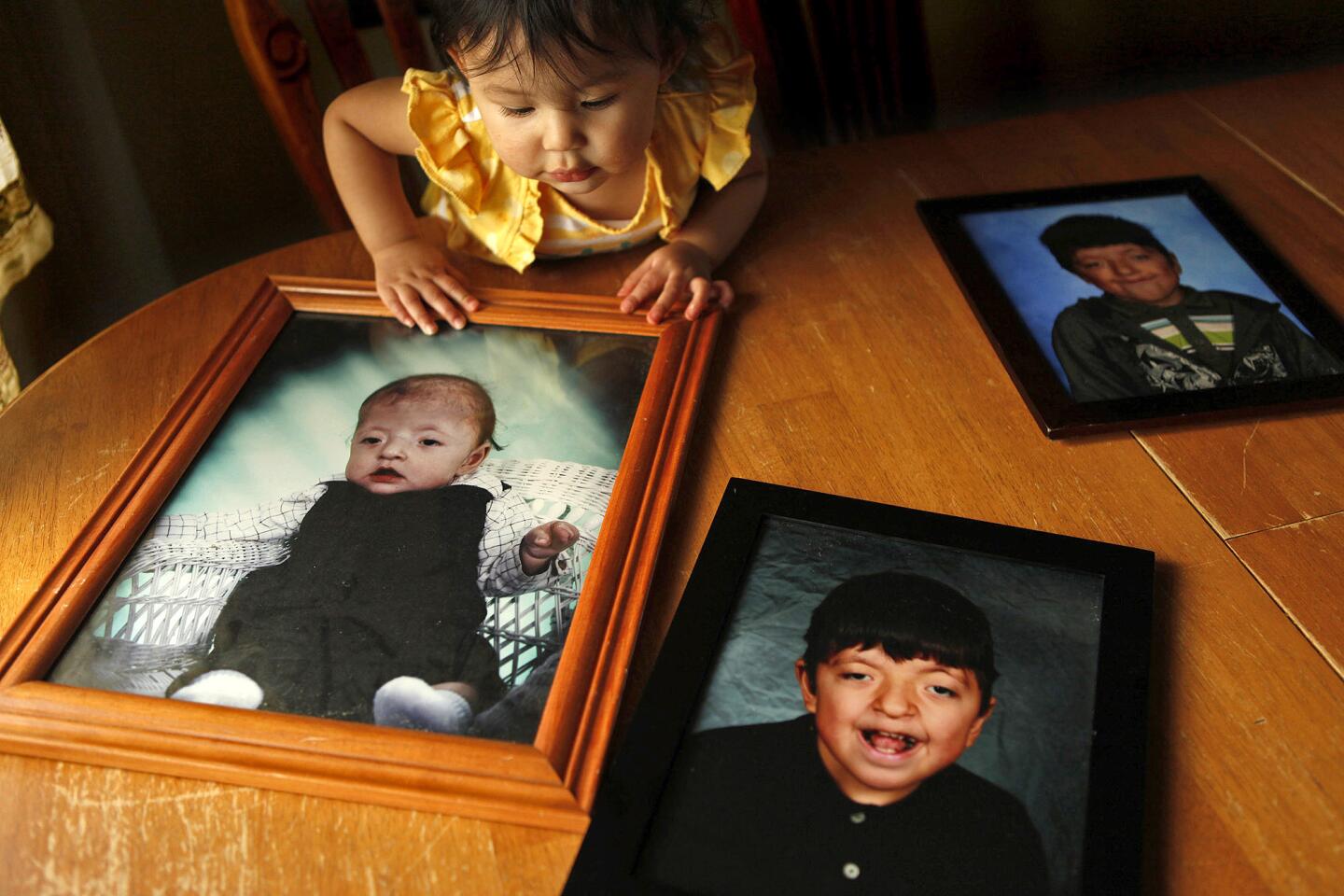
Abby Lane, 15 months old, checks out photographs of her brother James Weatherwax in various stages of childhood at their home in Klawock, Alaska. James was born with Apert syndrome, a rare genetic mutation that fuses the skull prematurely, distorts the bones of the face and melds the muscles and bones of the fingers and toes. (Genaro Molina / Los Angeles Times)
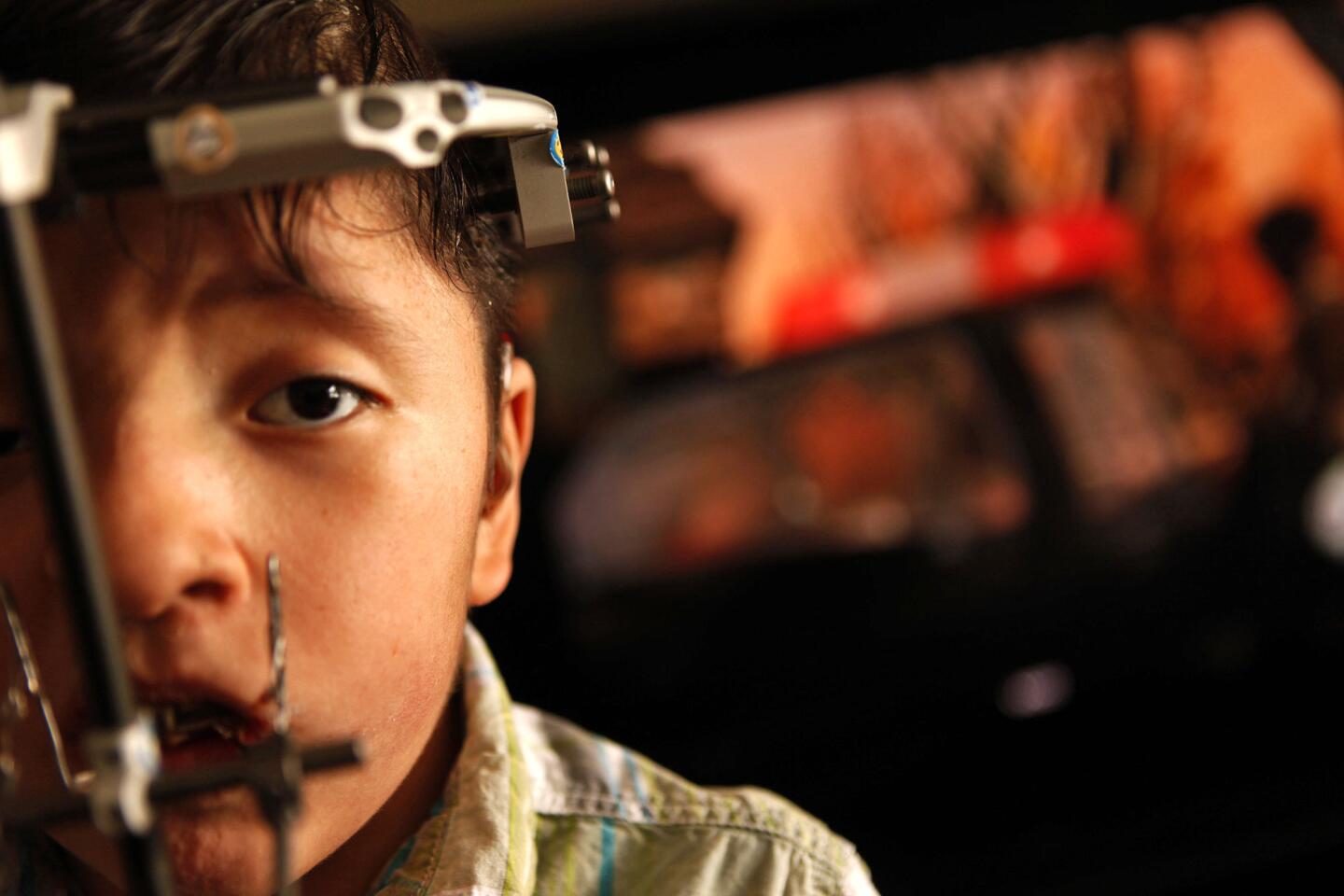
James Weatherwax, 11, who has Apert syndrome, wears a device to help stretch the bones of his face apart. The halo was developed by Dr. Richard Hopper, head of the craniofacial center at Children’s Hospital in Seattle. (Genaro Molina / Los Angeles Times)
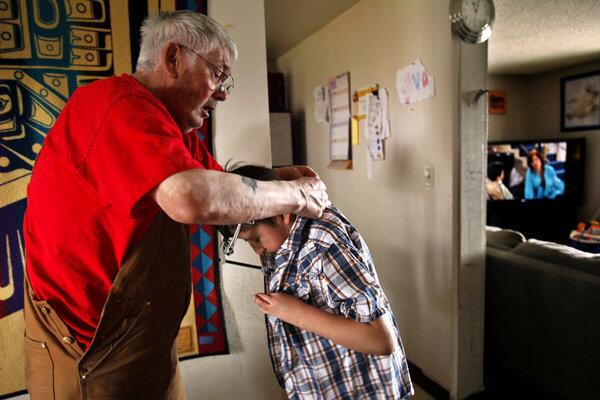
Jim Williams, 74, helps his grandson James Weatherwax, 11, put on his shirt at their home in Klawock, Alaska. “His grandpa really ... babies him,” says James’ mother, Kecia. “I get mad at my dad because I don’t want him being too dependent.” (Genaro Molina / Los Angeles Times)
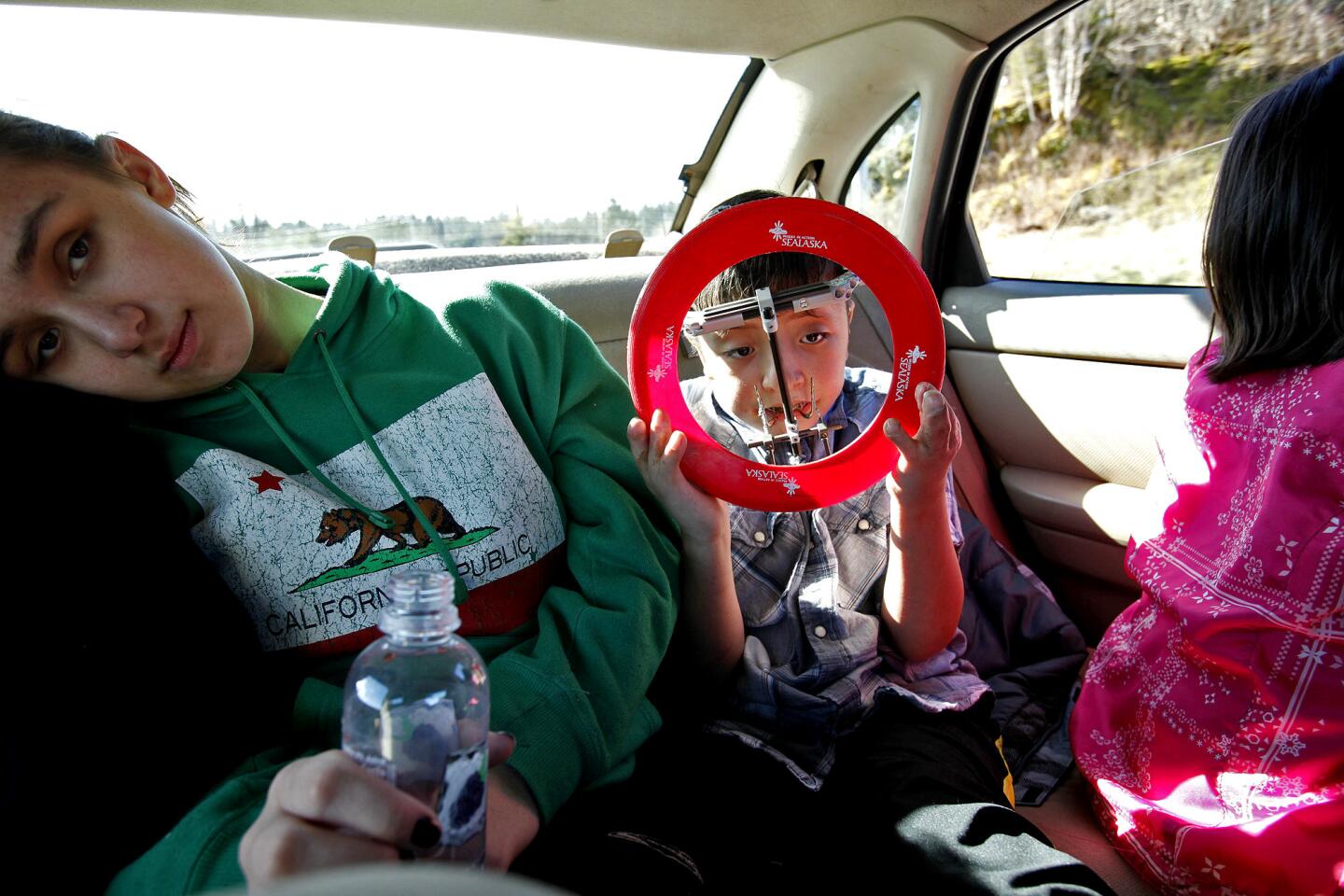
James Weatherwax, 11, enjoys a ride with friend Amber Lynn DeBourguignon, 14, and his sister Ava Lane, 5, in Klawock, Alaska. (Genaro Molina / Los Angeles Times)
Advertisement
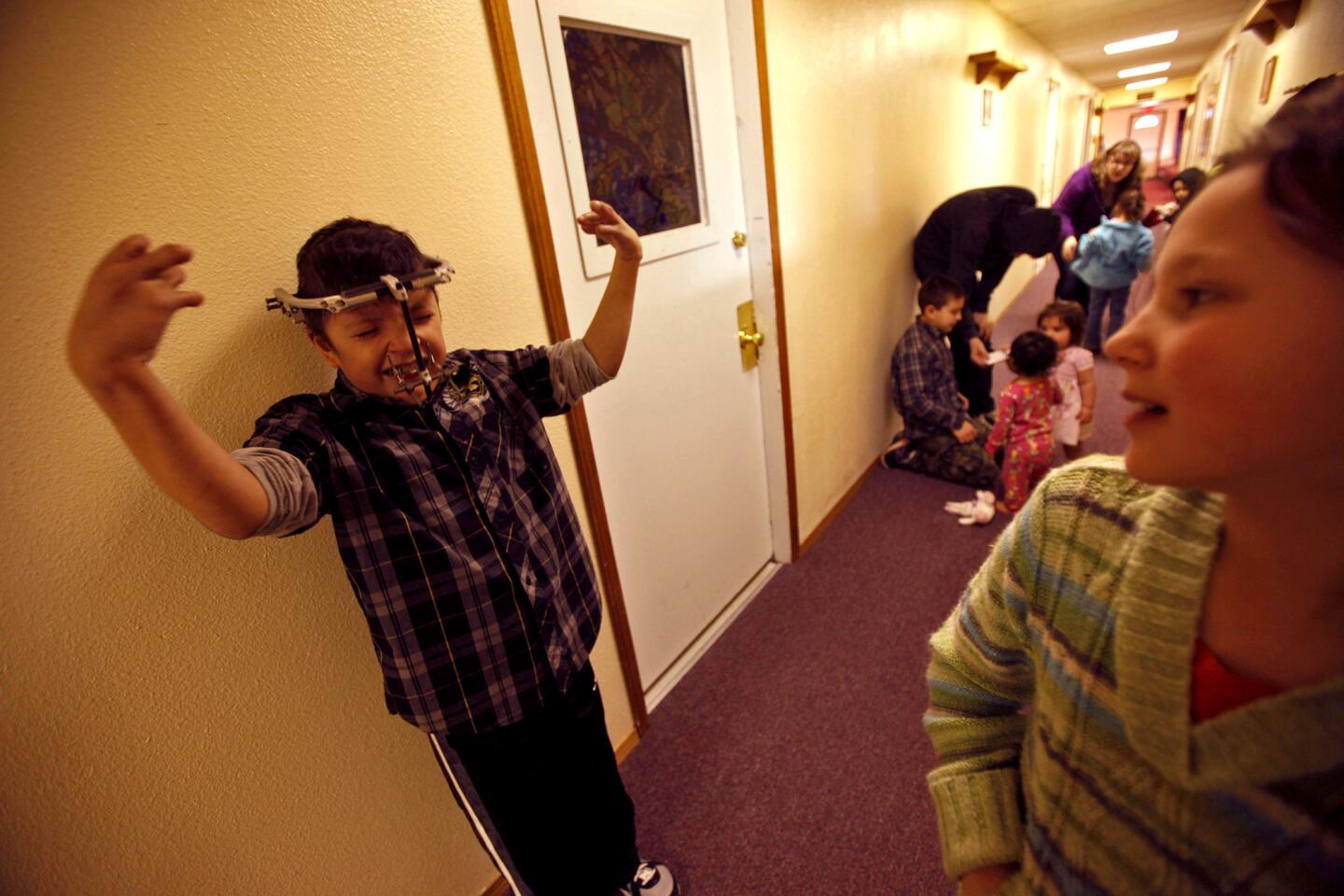
James Weatherwax, 11, strikes a pose to get the attention of Victoria Marie Johnson Fields, 10, while waiting to attend a Bible study class in Klawock, Alaska. “Are those nails in your head?” asks Victoria. “Did it hurt when they put it on?” To which he replies, “Superbad.” (Genaro Molina / Los Angeles Times)
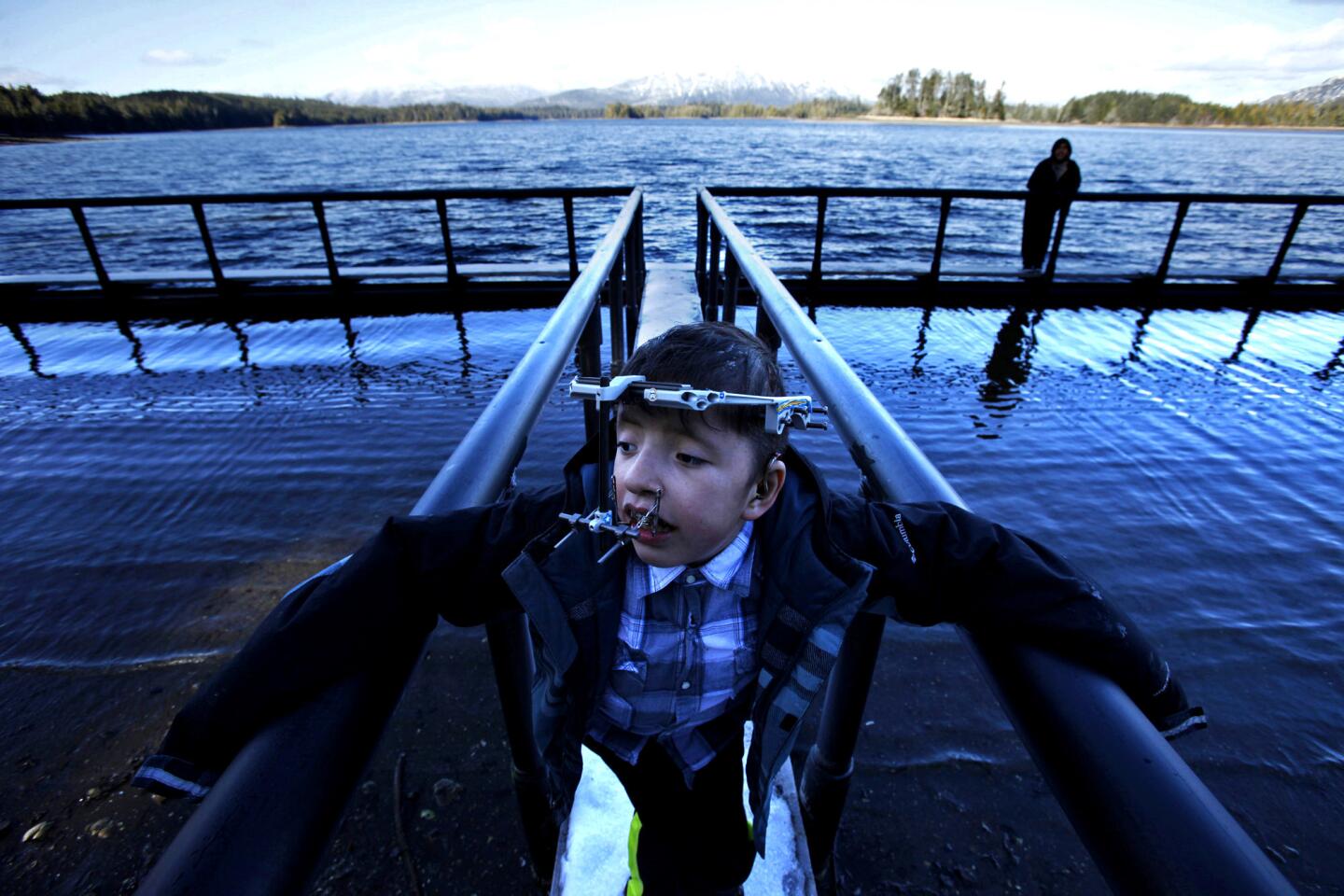
James Weatherwax, 11, plays on the docks under the watchful eye of his friend Johnny Roberts, 14, in Klawock, on Alaska’s Prince of Wales Island. Their friendship was forged two years ago when Johnny confronted some boys who were bullying James. “Sometimes kids pick on him. And I don’t like it,” Johnny says. (Genaro Molina / Los Angeles Times)
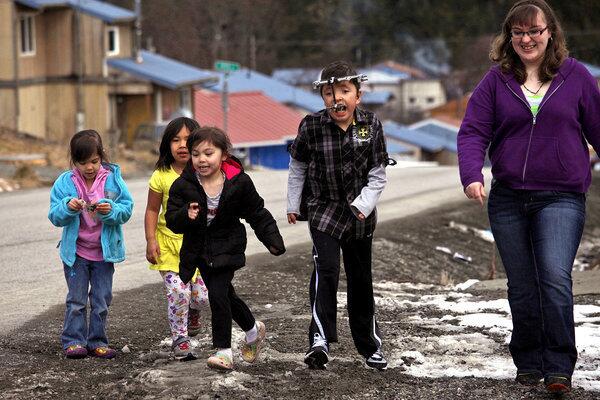
James Weatherwax, 11, second from right, and other children run alongside teacher Johanna Lambeth before attending Bible study class at the Salvation Army Church in Klawock, Alaska. James was to travel to Seattle the following day to have his halo removed at Children’s Hospital. (Genaro Molina / Los Angeles Times)
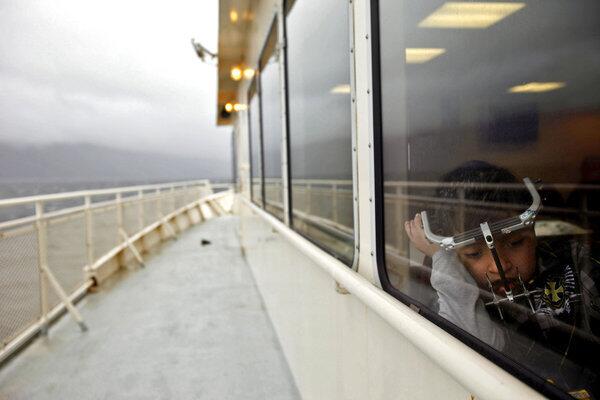
James Weatherwax, 11, spends a quiet moment during a 3 1/2-hour ferry ride from Hollis to Ketchikan in Alaska. From there, he and his mother, Kecia, will take a plane to Seattle, where James will have his halo removed at Children’s Hospital. (Genaro Molina / Los Angeles Times)
Advertisement

James Weatherwax, 11, and mother Kecia Weatherwax on their 3 1/2-hour ferry ride from Hollis to Ketchikan in Alaska. From there they will take a plane to Seattle, where James will have his halo removed. (Genaro Molina / Los Angeles Times)
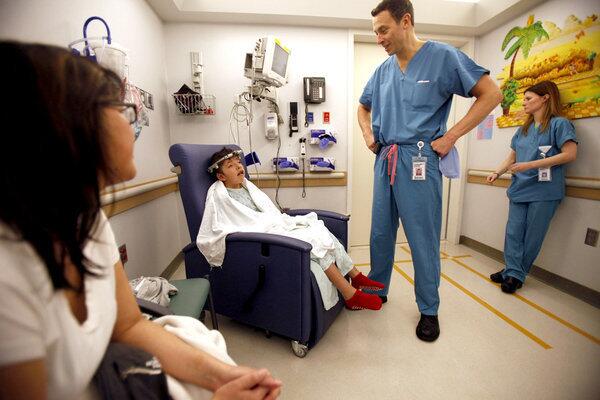
Dr. Richard Hopper, head of the craniofacial center at Children’s Hospital in Seattle, visits with James Weatherwax and his mother, Kecia, before operating on the youngster to remove the metal brace. Dr. Hopper tried to reassure James that the operation was very brief and not as involved as when the device was attached. (Genaro Molina / Los Angeles Times)
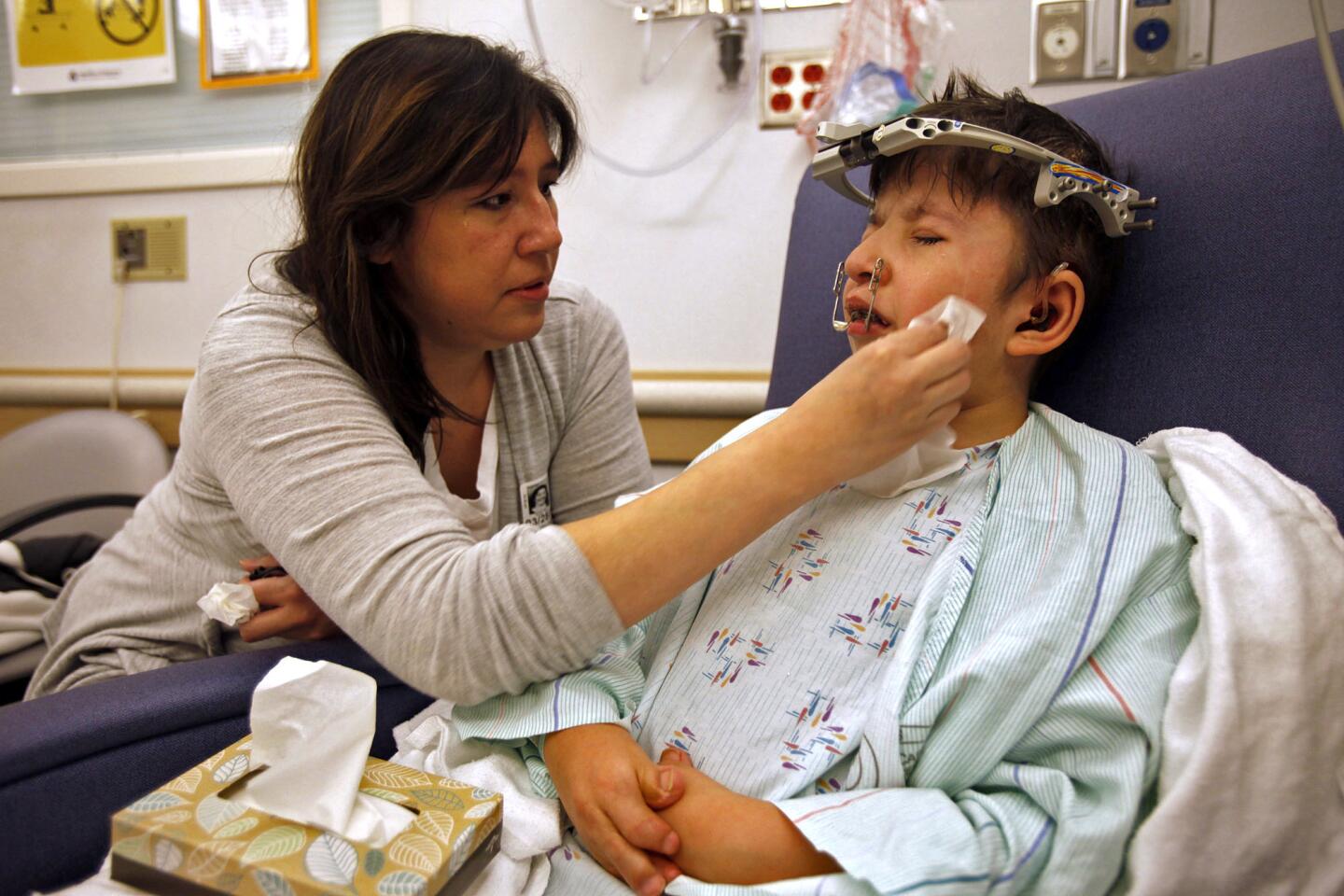
An emotional Kecia Weatherwax wipes the tears from son James’ face before surgery to remove the halo. (Genaro Molina / Los Angeles Times)
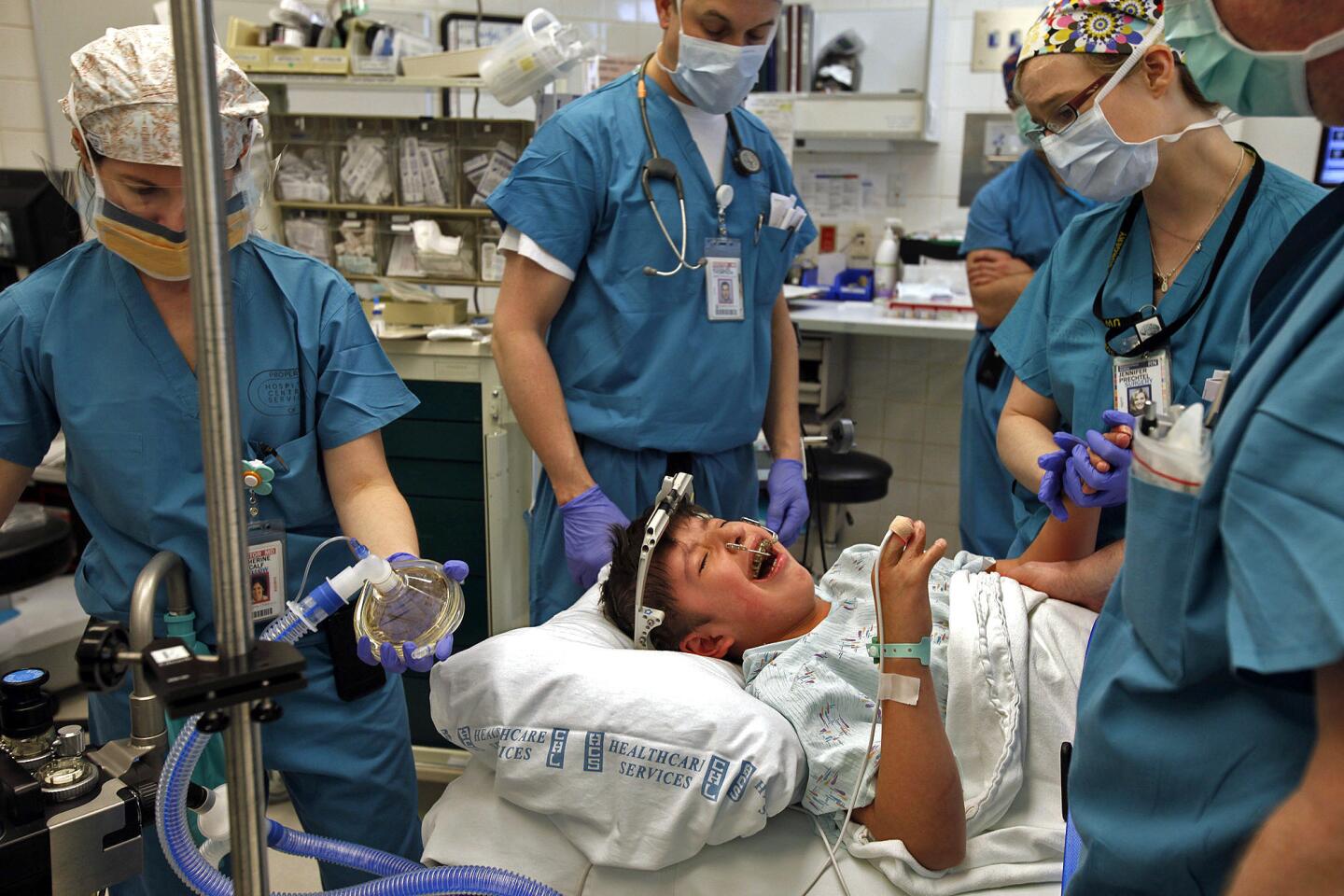
James Weatherwax, 11, becomes emotional before anesthesia is administered in the hospital operating room in Seattle. Members of the medical staff told James jokes and tried to reassure him that the operation would be over quickly. (Genaro Molina / Los Angeles Times)
Advertisement
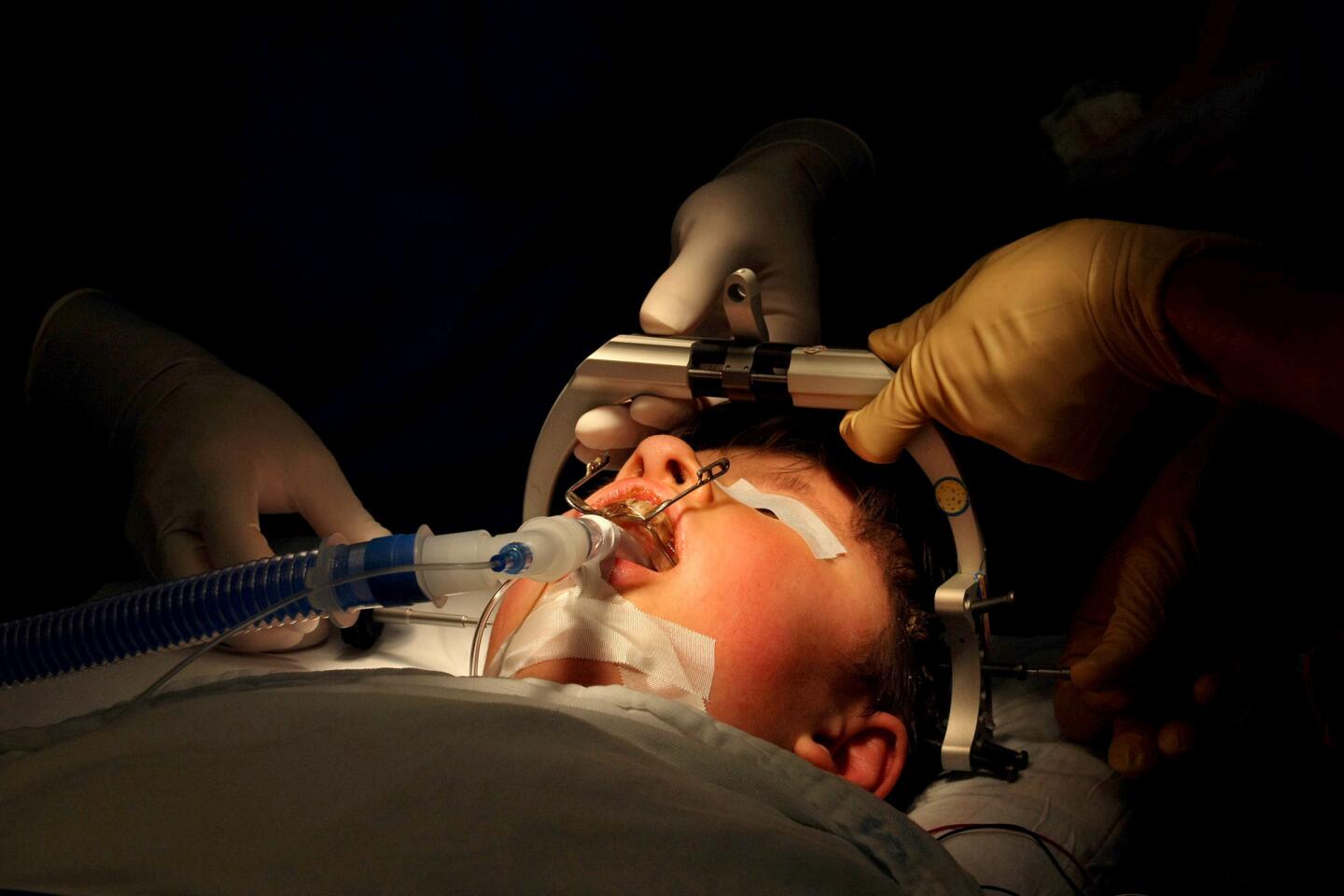
Craniofacial surgeon Dr. Richard Hopper, with yellow glove, and other medical personnel remove the halo from James Weatherwax’s head at Children’s Hospital in Seattle. (Genaro Molina / Los Angeles Times)
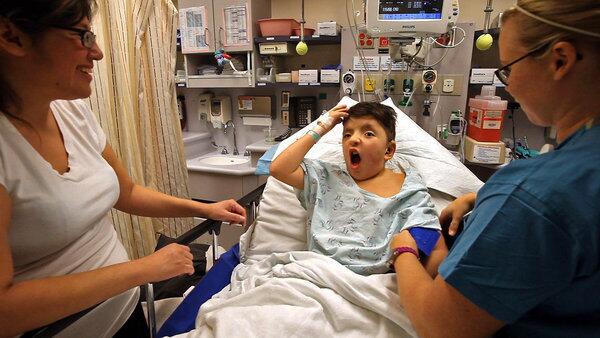
After his surgery, James Weatherwax expresses surprise at finding the halo gone as his mother, Kecia, left, looks on at the hospital in Seattle. (Genaro Molina / Los Angeles Times)







